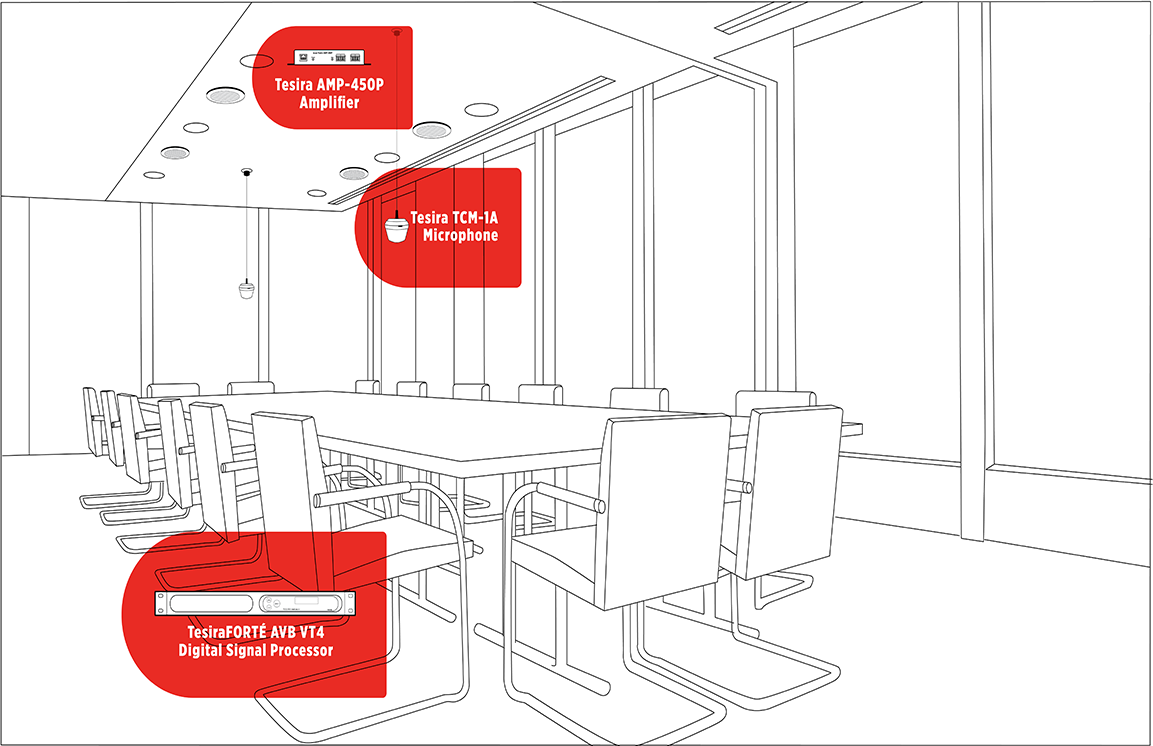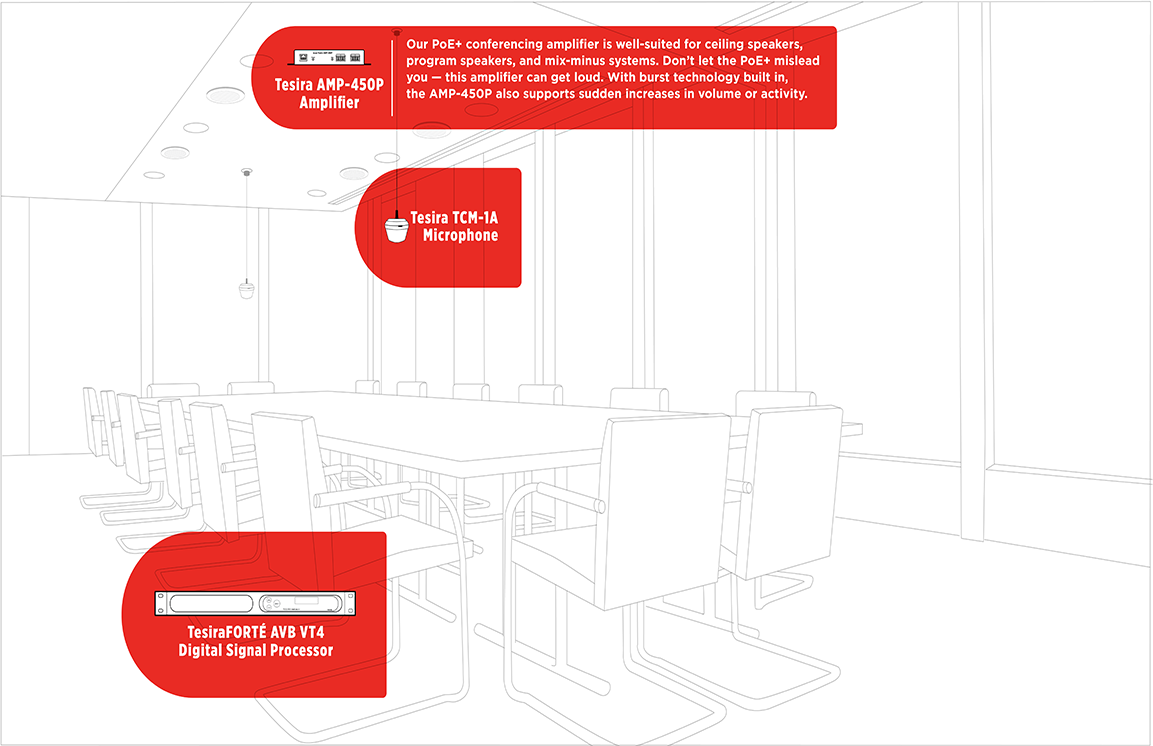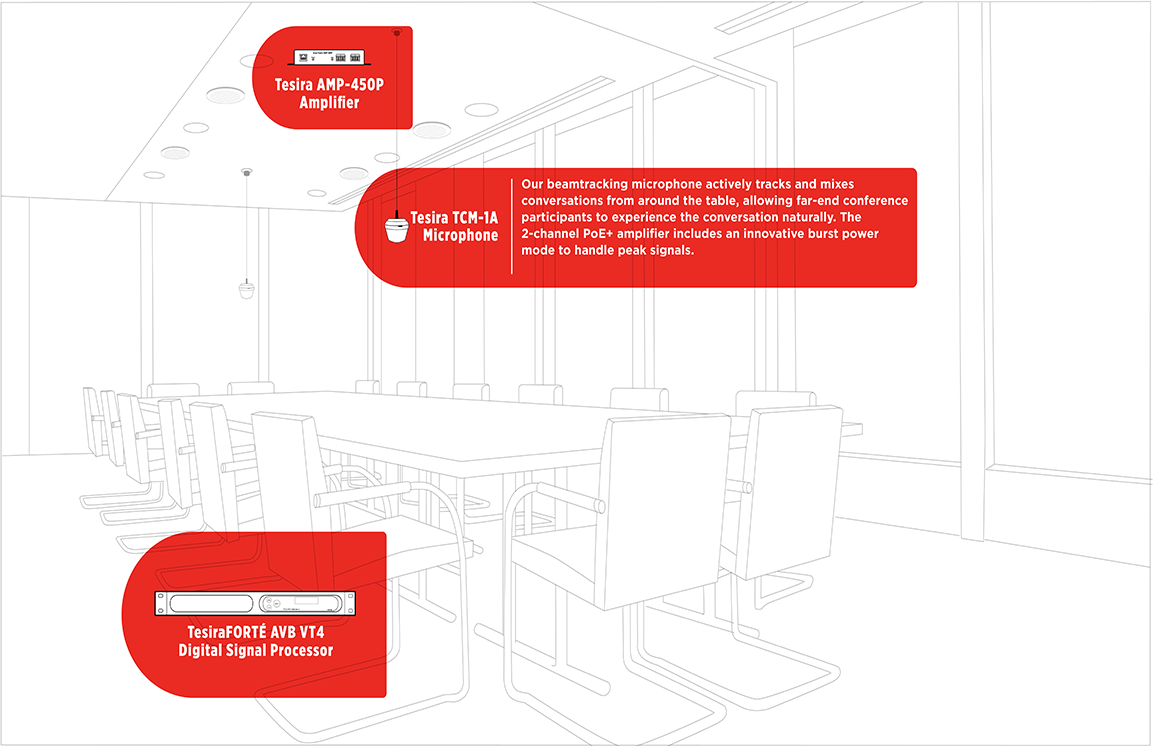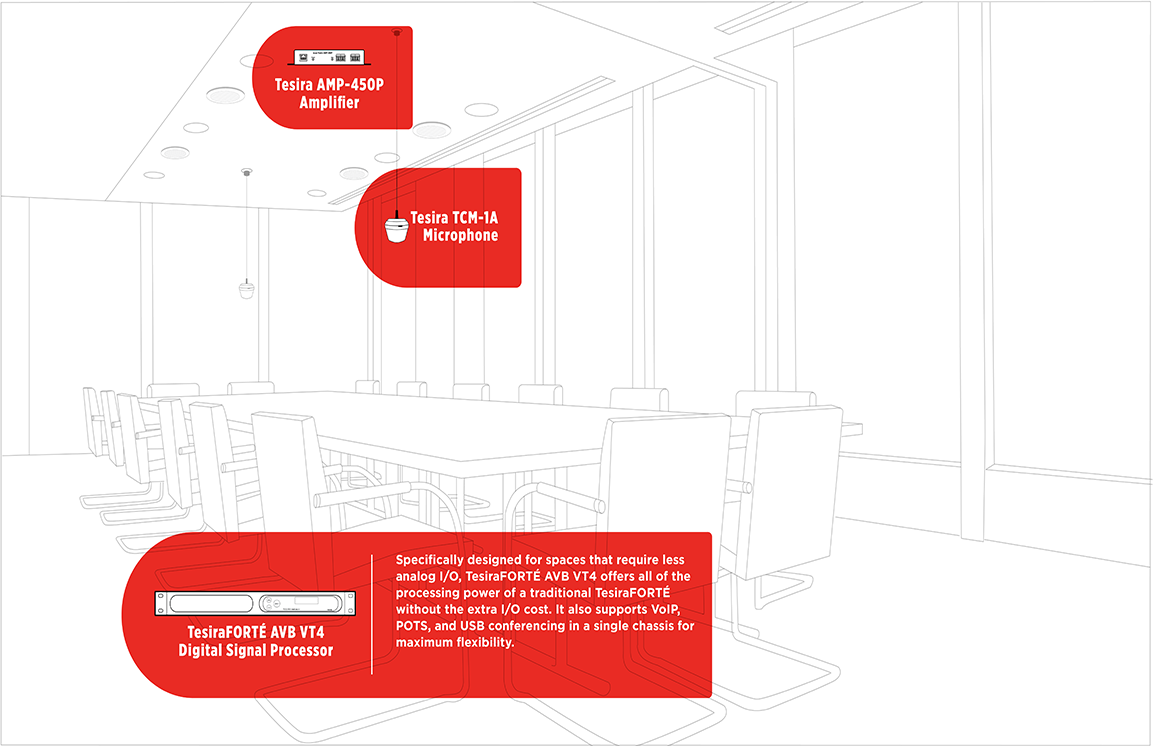Microphones: Tesira TCM-1, TCM-1A, and TCM-1EX
- No setup or adjustments to beamtracking settings are required
- Each mic only uses a single channel of AEC
- Three 120-degree zones for 360 degrees of coverage
- Multiple mics can be daisy-chained (2 with Devio, 3 with Tesira)*
- Suitable for use in air handling spaces, such as drop ceilings
Amplifiers: Tesira TCM-1A and AMP-450P
- Powered by PoE+, with internal power draw protection
- Burst power mode to handle peak signals
- Software-selectable power versus channel count
- Suitable for use in air handling spaces, such as drop ceilings
Digital Signal Processor: TesiraFORTÉ AVB VT4
- All the DSP power of a traditional TesiraFORTÉ, without the unused I/O cost
- 4 analog inputs and 4 analog outputs
- VoIP, POTS, and USB in a single chassis
What is Beamtracking Technology?
Beamforming microphones are arrays of microphone elements with “beams” (polar patterns) that can be controlled and shaped via DSP, allowing the beams to be “aimed” at specific areas of the room. While the development of beamforming microphones has been a significant advancement for professional AV, the fact remains that the beams determine where people should be. We think this is the wrong way around. Instead, we think people should determine where the beams are directed.
A Biamp room emphasizes the user experience—not just with the technology itself, but also with how people interact with it. That’s why we give people the ability to move around the room as they see fit, not as the microphone dictates.
Beamtracking technology differs from beamforming in that it allows a single microphone to cover a wide area with little to no setup, since the microphone identifies and locks to a signal source—even if the person speaking is moving around. Our beamtracking microphones also intelligently mix conversations from around the table, allowing far-end conference participants to experience a more natural-sounding conversation. The patented interactions between our AEC and beamtracking algorithms dynamically adjust the output in real-time to ensure far-end echo is minimized.










